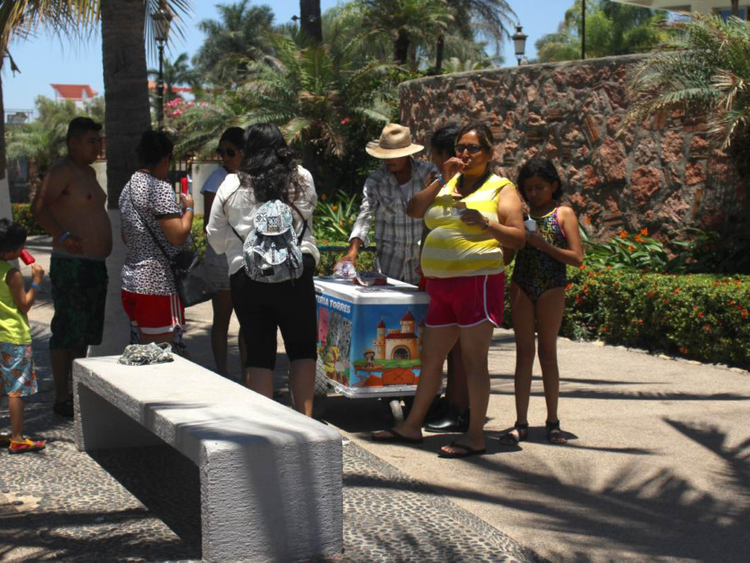
MEXICO CITY: Children at school already mock six-year-old Yatzyri by calling her “fatty”, fuelling her mother Ana Laura Martinez’s worries about her daughter’s health if she does not lose about 16kg.
As Yatzyri fidgeted with a large pink hair bow, Martinez explained that tests so far have shown no signs of the 38kg child having the illness that plagues her family — and ranks as Mexico’s biggest killer — type 2 diabetes.
“I’m diabetic. My dad died very young of diabetes at 39, my grandmother also died, my mother has it, my brother has it. It’s something in the family,” said Martinez, in the obesity clinic at the Federico Gomez Children’s Hospital.
“She needs to cut out some of what’s causing her harm so she doesn’t suffer from this ugly disease.”
She hopes the clinic will develop a diet plan for Yatzyri, who loves spaghetti, corn, and maize snacks sold on the street.
As one of the world’s fattest nations with over 70 per cent of adults and a third of children overweight or obese, Mexico is acting as an early warning for countries around the world struggling to cope with a future of soaring obesity levels.
- Salvador Villalpando | Doctor at Federico Gomez Children’s Hospital
Vitamin ‘T’ diet
Globally, around 40 per cent of adults are overweight and 13 per cent obese, says the World Health Organisation (WHO), with the surge in obesity in the last three decades presenting a major public health epidemic in both poor and rich nations.
While some Mexicans joke about their carbohydrate-heavy “Vitamin T” diet of tacos, tortillas and tamales, the nation’s waistbands are being stretched by an addiction to cheap and ubiquitous junk food and increasingly sedentary lifestyles.
Add its standing as one of the world’s top soft drink guzzlers, and health professionals are bracing for a time bomb scenario with a high economic and social cost.
“When you get to treat obesity, you’re one day too late. The only way to solve this is prevention,” said Salvador Villalpando, a specialist doctor who runs the child obesity clinic.
“There is no way of solving the problem of a population that is already obese. Those kids are very, very unlikely to lose weight on their own.”
While abuse or family breakdown are some of the many complex factors affecting obesity clinic patients, Villalpando said most Mexican children are eating adult foods by age two.
Most of the children at the clinic, who largely come from low-income families, already show signs of insulin resistance, said Teresa Siliceo, paediatric nutritionist at the hospital. By the time they become teenagers, around a third are likely to develop preventable diseases such as type 2 diabetes, which can cause blindness, kidney failure and amputations.
Obesity and under-nutrition
Unless Mexico sheds its excess weight, the nation faces hefty health bills in the future. The United Nations estimates the cost of dealing with an overweight population will be $13 billion a year over the next six decades.
Diabetes alone — which affects up to 14 per cent of adults and kills around 100,000 a year — costs Mexico almost $5 billion annually, straining public health budgets, said think tank IMCO, the Mexican Institute for Competitiveness.
Compounding Mexico’s nutritional nightmare is the dual-edged sword of obesity and under-nutrition, particularly in children chewing on the empty calories of fast food.
Rural communities are particularly at risk as some swap traditional diets for processed alternatives, experts said, urging greater promotion of nutritional staples such as beans.













